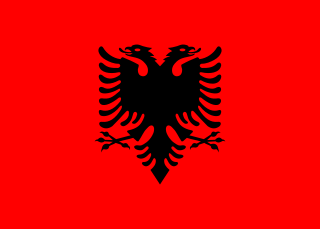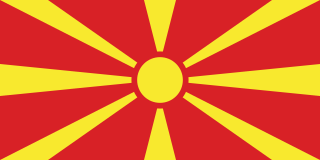Physics of Rowing
Physics of Rowing
Recent modifications:
None of the following information is copyright, so feel free to reproduce
any or all of it, credited or uncredited as you see fit (although I might be a
bit miffed if anyone else tried to pass it off as their own work).
Propulsion
Why does the blade have to slip in the water?
(when it doesn't if you push off a solid object?)
Resistance
What causes a boat to slow down?
Why don't you go twice as fast if you pull twice as hard?
Kinetic Energy
Why are 'cleavers' a good idea ?
(when you can get the same impulse from smaller blades?)
Centre of Mass
Why do boats continue to accelerate (and move quickest)
after the end of the stroke?
Speed Variation
Why is it more efficient to row a piece with constant split-times?
Why is it more efficient to keep the hull speed as uniform as
possible during the stroke?
Why were 'sliding rigger' boats banned?
Balance
Why do/don't boats balance?
Why is it easier to balance a moving boat?
Levers
What type of lever is an oar?
Why does the boat move forwards although I'm pushing it backwards
with my feet?
Gearing
What is meant by the gearing of an oar?
Why is gearing expressed in terms of the span (or spread)
rather than the inboard?
Why is changing the span 1cm supposed to be 3 times as effective
as moving the button the same distance?
What are CLAMS and why are they used?
Why are cleavers shorter than the equivalent Macon oars?
Newton's Laws of Motion
Introduction
How do erg scores/boat speed depend on bodyweight?
Relationship between Power and Weight
Why and how do Aerobic and Anaerobic
power depend on weight?
Power/Weight Ratios
How do Power/Weight ratios depend on weight?
Relationship between Weight and Erg Speed
Why do heavier rowers have an advantage on Erg scores
Where does the 2/9 (or 0.222) exponent in erg-conversion scores
come from?
Relationship between Weight and Boat Speed
Why are heavier rowers faster than lighter rowers?
Why is this difference less obvious over long distances?
Speeds of different Boat Classes
Why are boats with more rowers faster?
How much faster are they?
How fast should an octuple scull be?
Effect of deadweight
What is the effect of deadweight on boat speed?
How much does the weight of the cox affect the boat speed?
Relationship between Erg Score and
Boat Speed
How do you convert erg-scores of rowers
of different weights into equivalent boat speed?
If I lose weight, how much faster would I scull?
If I lose weight, how much should my erg score be allowed to drop in
order to maintain the same boat speed?
Effect of Boat Weight on Boat Speed
Is a "lighter" boat necessarily a "faster" boat?
Introduction
Which feels 'heavier': rowing upstream or downstream?
Viscosity
What is viscosity ?
Why is viscous drag said to be proportional to velocity?
Boat Resistance
Why does boat resistance vary as velocity-squared? (when viscous
drag is usually said to be proportional to velocity)
River Flow
Why does a river flow quickest where it is deepest?
Upstream/Downstream Resistance
Why does rowing upstream feel 'lighter' than rowing downstream?
Shallow Water Resistance
Why does rowing in shallow water feel heavier than deep water?
How shallow does water have to be before you notice?
Upstream/Downstream times
Why is the average time for upstream + downstream pieces slower
when the stream is faster? (when you'd expect the stream effect to cancel)
Introduction
What are the different types of Ergometers?
Where can I find more information about each type of Ergometer?
Mechanics of Rotating Bodies
How do Newton's Laws apply to rotating bodies ?
Power Dissipation
Why/how do ergometers lose speed ?
Power Supplied
How does power supplied turn into rotation speed?
How does power relate to the flywheel speed ?
Changing the Cog
What is the effect of changing the cog (sprocket) size?
Changing the Damping
What is the effect of changing the damper setting ?
Measuring the Damping
How does the ergometer 'know' what damper setting is used ?
What other effects are/are not allowed for by the ergometer ?
Measuring the Power Supplied
How does the ergometer calculate the indicated 'Power' ?
Indicated Speed (Splits) and Distance
How does the ergometer calculated the speed and distance ?
Indicated Power v. Indicated Speed (Splits)
What is the relationship between indicated Power and Speed?
Power v. Indicated Calories
What is the "Calories" output on the monitor ?
What is the relationship between indicated Power and Calories?
Dynamic v. Static Ergs
What is the difference between moving and stationary ergs?
Why are 'dynamic' ergs better boat simulators
Why do you get higher scores using the Concept 'slide'
Effect of Rating
How does rating affect the power required ?
Why do people erg at lower rates than they row/scull?
Effect of Altitude
What is the effect of altitude on erg scores?
Glossary of terms used in
Rotational Mechanics
What are the various terms used in studying rotational systems?
Bibliography and References
Atkinsopht
Concept II
Federation Internationale des Societes
d'Aviron (FISA)
Balance
of Racing Rowing Boats (Steve Kerr , document now hosted locally)
Hydrodynamics Articles
(Leo Lazauskas )
Weight/Sex/Age Adjusted Ergo Ladder
(Jeremy Martin )
Rowing Physiology and
Performance (Stephen Seiler )
Physics of Sport
(Tom Steiger , originally from Ken Young )
Simulation of Rowing
(Marinus van Holst )
Rowing FAQ
(Hannes Hofer )
RowPerfect
rowing-x.pert
Rowing Bibliography (Florian Caspari )
Physics of Rowing [PDF file] by Chris Pulman,
University of Cambridge.
Rowing
Rigger Design (Virginia Tech )
Article
on Sliding Riggers (from Hear the
Boat Sing )
Acknowledgements
The following people have also
contributed to the content of these web-pages: Paul Blomerus,
Carl Douglas,
Scott Gordon,
Dena Hirchak,
Marinus van Holst,
Dick Nixon, Hans Lohse, Jon Williams.
Anu Dudhia (dudhia@atm.ox.ac.uk )























